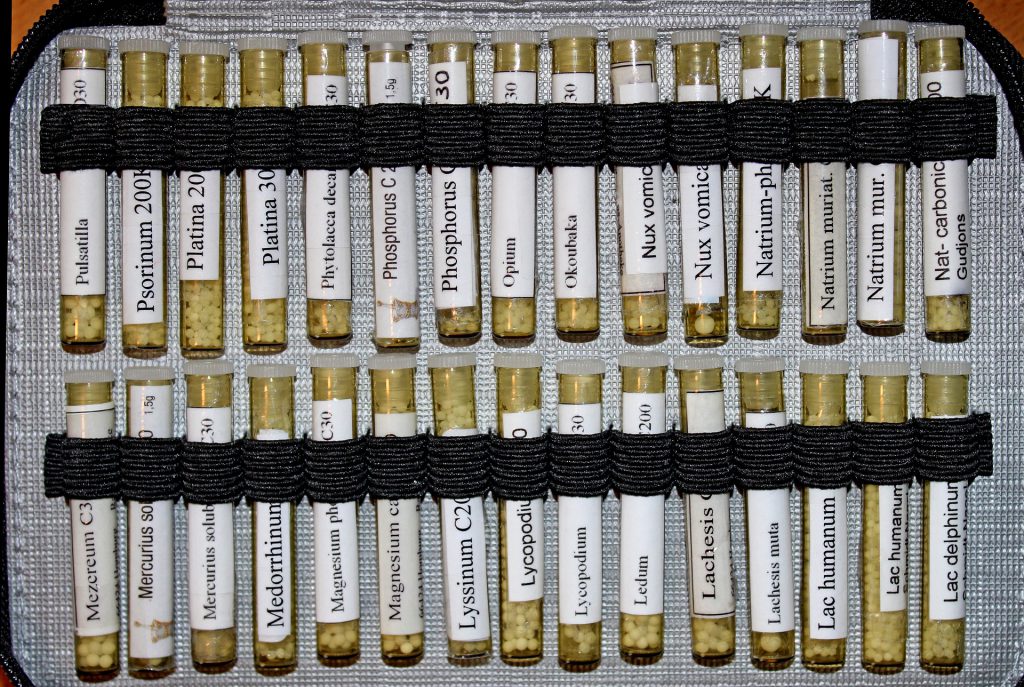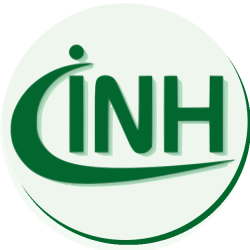Really?

In the pharmacy all kinds of homeopathic globules are available for sale -over the counter. They are also strongly promoted by the manufacturers with the attributes “gentle and natural“. Above all, “simple and side-effect-free” self-treatment is recommended again and again. There are many books on the subject (guidebook, “Quickfinder”) and the majority of homeopathic remedies are recommended on the basis of word-of-mouth propaganda (“With my cold I recently had super remedy XY helped, try it yourself!”). This was clearly confirmed by the results of an Allensbach survey conducted in Germany in 2014. According to the information given there, 67 percent of those questioned named the “advice of friends, family and acquaintances” as the “way to homeopathic medicines”.
In spite of all this, consumers do not know (and manufacturers, vendors and even homeopaths do not tell them) that there is little that contradicts Hahnemann’s method more than self-treatment with globules.
What does homeopathic doctrine say?
As already explained in another context, Hahnemann’s method does not deal with diseases, but with symptoms. The method requires that the correct remedy be selected from the repertories, i.e. the directories in which the symptom pictures are assigned to the homeopathic remedies, for a patient’s symptom pictures that has been created with great care. All this is the task of the physician, the “experienced healing artist”. Incidentally, a remedy with only a single original substance (homeopathic stock) must be determined. Hahnemann clearly rejected remedies that were produced with several substances, so-called complex remedies, and most classical homeopaths still do so today.
The path to the symptom picture leads through the homeopathic anamnesis, the well-known and always particularly highlighted therapeutic conversation, in which all, even the very slightest, sensitivities are to be recorded by the therapist in the highest possible differentiation and condensed into a closed symptom picture. From the point of view of homeopathy, this simply serves to determine the patient’s “symptom bundle”, which is then decisive for the selection of the individual remedy (but doesn’t has the aim to be a separate therapeutic intervention at its own). It is understandable that this requires the “experienced therapist”, at least someone who is thoroughly familiar with Hahnemann’s method in practice. The Organon, the Bible of homeopaths, for example, says this:
“The unprejudiced observer – well aware of the futility of transcendental speculations which can receive no confirmation from experience – be his powers of penetration ever so great, takes note of nothing in every individual disease, except the changes in the health of the body and of the mind (morbid phenomena, accidents, symptoms) which can be perceived externally by means of the senses; that is to say, he notices only the deviations from the former healthy state of the now diseased individual, which are felt by the patient himself, remarked by those around him and observed by the physician. All these perceptible signs represent the disease in its whole extent, that is, together they form the true and only conceivable portrait of the disease.” (§ 6 Organon, only symptoms are perceptible, not diseases – 6th edition, translated by Boericke).
“Now, as in a disease, from which no manifest exciting or maintaining cause (causa occasionalis) has to be removed, we can perceive nothing but the morbid symptoms, it must (…) be the symptoms alone by which the disease demands and points to the remedy suited to relieve it – and, moreover, the totality of these its symptoms, of this outwardly reflected picture of the internal essence of the disease (…) and thus, in a word, the totality of the symptoms must be the principal, indeed the only thing the physician has to take note of in every case of disease and to remove by means of his art, in order that it shall be cured and transformed into health.” (§ 7 Organon, the symptom picture is the main task for the healing artist – 6th edition, translated by Boericke).
Self-medication? Diagnosis of colds, stomach pains, headaches, general malaise? All this is unthinkable according to Hahnemann’s system of “individual homeopathic therapy”. Healing artists, it’s your effort!
A little history
Homeopathy is, on the one hand, strict dogmatism, in the sense of Hahnemann’s “Follow it, but follow it exactly!” On the other hand, homeopaths are the greatest possible pragmatists. But that has been the case for a long time – and it has also been the subject of criticism for a long time. Already during Hahnemann’s lifetime there was self-medication and recommendations, mainly because homeopathic doctors were few and far between and travel possibilities were very limited. Hahnemann himself seems to have tolerated this to a large extent in the interest of spreading his teaching, but without adapting his teaching to it in the least. At the end of the 19th century homeopathy was indeed firmly established as “lay medicine”. There were plenty of guide books and homeopathic home pharmacies. Around 1890 one could read that “the lay activity in matters of homeopathy would be given for historical reasons, inseparably grown together with the latter”. Important homeopaths such as Hering (“Hering`s Rule”) wrote guidebook literature, Arthur Lutze maintained a considerable international distribution of homeopathic pharmacies (Baschin, Die Geschichte der Selbstmedikation in der Homöopathie; Quellen und Studien zur Homöopathiegeschichte / History of Self-medication in Homeopathy: Sources and Studies on History of Homeopathy; Volume 17, Essen, Germany 2012).
These historical reminiscences, however, do not, of course, legitimise self-treatment: Hahnemann himself did not change a single word in his teaching building, nobody else did ever so; Hahnemann’s writings are still regarded as untouchable down to the last letter. Especially since the homeopathic treatment by the “experienced healing artist” alone and the impossibility of self-treatment by laypersons are in fact compellingly derived from the homeopathic thought system. How one can endure this cognitive dissonance (which should actually have led the classical homeopaths to the demand to forbid the free sale of homeopathy) is an almost admirable achievement… or perhaps unquestioned “habit”?
Four-fifths of homeopathic remedies sold in Germany are sold “over the counter”
How is that possible? Regardless of Hahnemann, whose teaching is declaredly sacrosanct, today globules without a homeopathic anamnesis are bought like candy (good comparison actually …), disease names instead of symptom pictures are used as indications for the administration of globules, complex remedies are taken according to the manufacturer’s recommendation (better: manufacturer’s advertising), according to the advice of the neighbour or one’s own taste – and this is then also sold here and there as progress of the method. That’s isn’t it in no way! Therefore not, because this “progress” is not connected with systematic criticism, not with any extension of the horizon of knowledge, with a logical extension under rejection as old, as incorrectly recognized knowledge and under addition as new, as correctly recognized knowledge. Self-medication, treatment for illnesses instead of symptoms, and complex remedies are – among other things – only more watering down of Hahnemann’s method, which in addition produce even more inconsistencies than are already inherent in it. And all this without anyone ever changing a single letter of Hahnemann’s “holy scriptures”…
Where is the “individual method” when Mrs. Smith can simply buy globules for her stomach problems in the pharmacy? Perhaps Mrs. Smith would like to take a look at one of the great repertories and try to find the right globule under “stomach complaints”? Well – maybe not. The entries with stomach complaints are numerous – combined, however, with a myriad of symptoms that have occurred “simultaneously” with stomach pain at some point during a homeopathic drug test. Of course, confusion or helplessness would then prevail, because so many remedies could fit, or none at all. And so Mrs. Smith will probably give it up … But then it becomes even more difficult than it already is. Because then in fact the guessing actually begins, which is rationalized afterwards (“Last time the Chamomilla helped so well, so I try them again”, “With Mrs. Baker XYZ helped, then I take that”, “I don’t know any of the offered remedies, I decide according to my feeling”, “I choose intuitively”). By the way – Hahnemann himself scourged with strong words the “mistake” that even “experienced therapists” apparently out of habit and instinct often resort to “proven means” instead of exact repertorization. Whenever an improvement occurs afterwards, Mrs. Smith is subject to the post-hoc-ergo-propter-hoc fallacy and not to the effects of the chosen homeopathic remedy. And it is thus subject to a completely natural human perception disorder, which is very difficult to recognize – and even more difficult to accept, because we are programmed evolutionarily to “fast thinking” on the basis of appearances. Only one thing Mrs. Smith did not receive: effective medical treatment.
Authors: Udo Endruscheit and Dr. med. Natalie Grams

